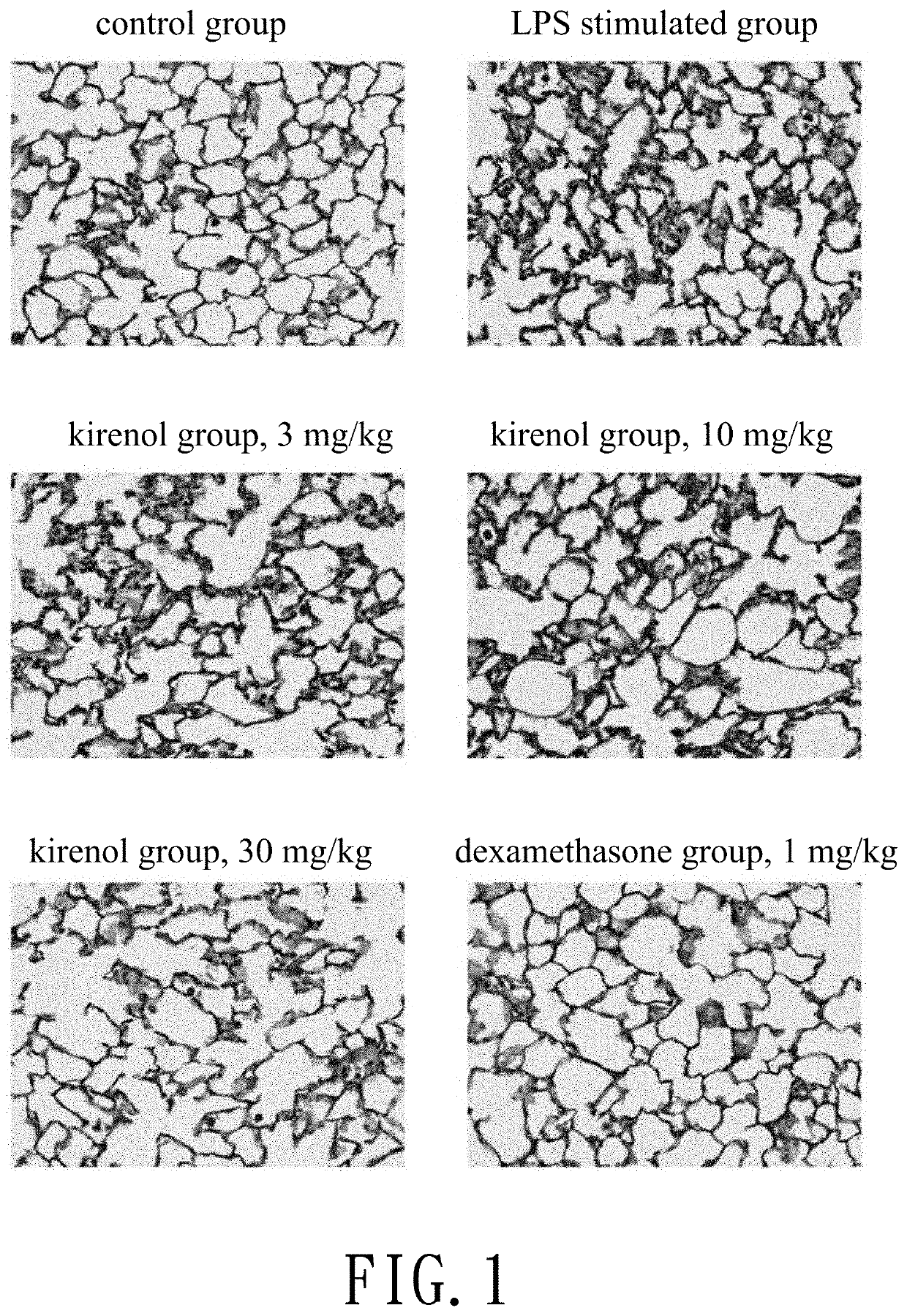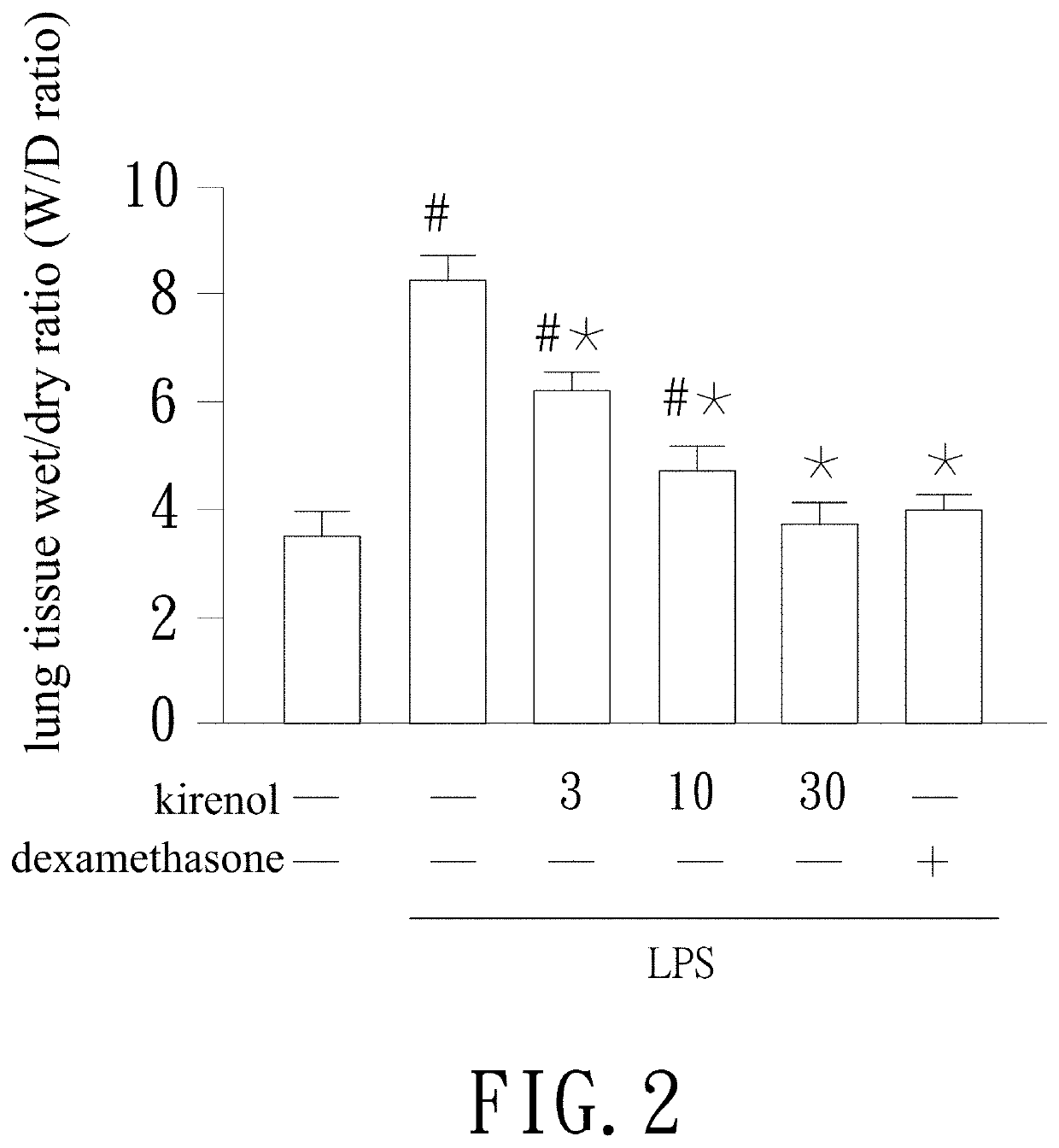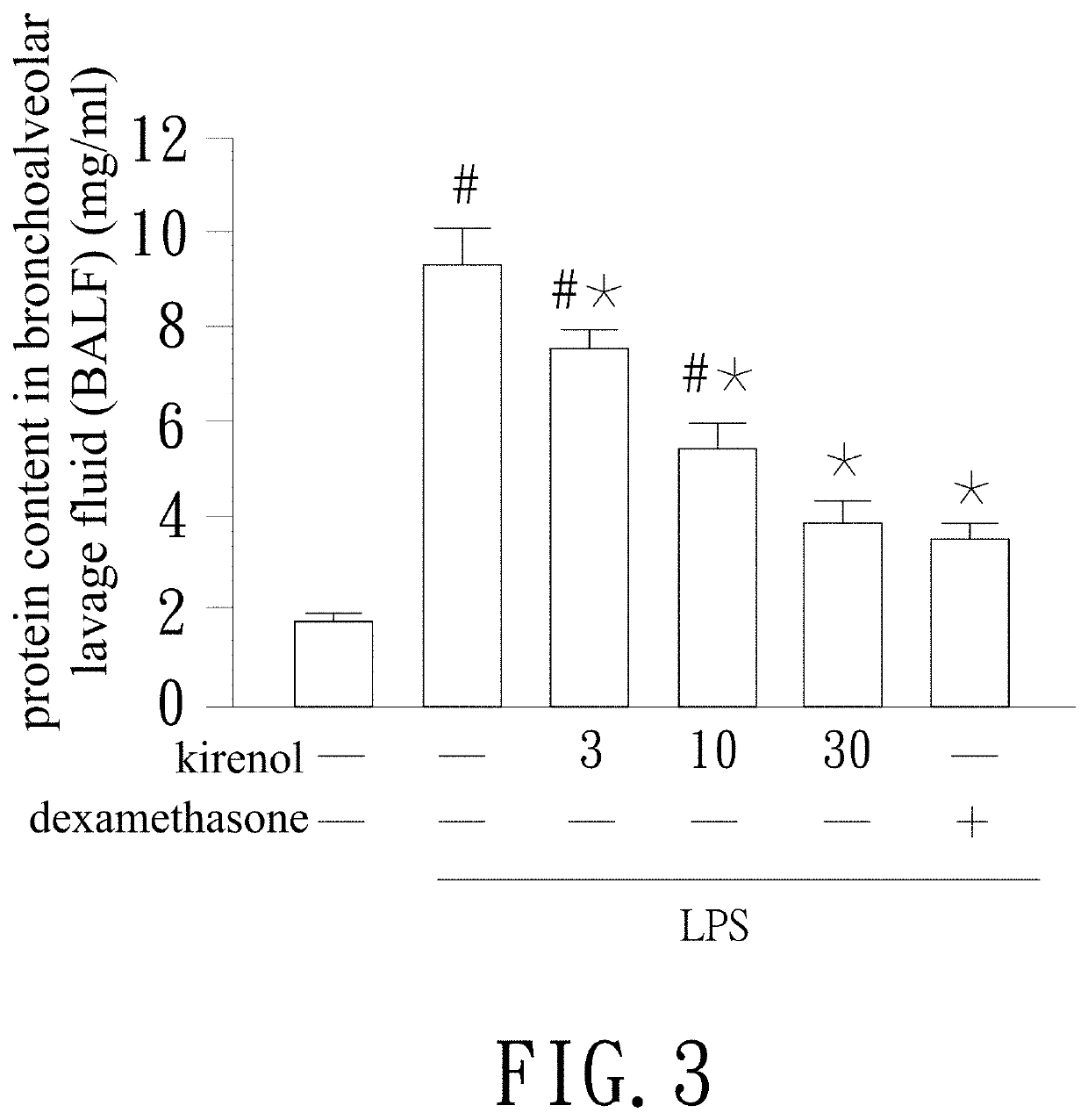Method for treatment of acute lung injury by use of kirenol
a technology of kirenol and lung injury, applied in the field of acute lung injury treatment, can solve the problems of complex method for preparing polypeptides, limited effect, and high cost, and achieve the effect of reducing damages
- Summary
- Abstract
- Description
- Claims
- Application Information
AI Technical Summary
Benefits of technology
Problems solved by technology
Method used
Image
Examples
embodiment 1
renol on Hyaline Membrane Formation in Lung
[0025]Kirenol used is obtained from ChemFaces (Catalog No. CFN98867) dissolved in Dimethyl sulfoxide (DMSO). While in use, Kirenol is diluted in DMSO to the concentration required.
[0026]A mouse lung lobe is treated by fixation, embedding, section, and dewaxing. After Hematoxylin & Eosin stain, the lung tissue is observed and accessed. Protein like fluid is leaked into and aggregated in alveoli to form hyaline membrane and cause noncardiogenic pulmonary edema when the alveolar capillary permeability is increased. At the moment, inflammatory cells proliferate in the lung. Thus hyaline membrane formation can be used as an indicator of the increased alveolar capillary permeability.
[0027]Refer to FIG. 1, histologically there is more hyaline membrane formation and more immune cell infiltration is observed in the LPS stimulated group compared with the control group. Kirenol reduces hyaline membrane formation in lung and immune cell infiltration in...
embodiment 2
renol on Lung Tissue Wet / Dry Ratio
[0028]The mice are killed and lung tissue is obtained. The lung tissue is weighted to get wet weight. Then the lung tissue is dried in a 80° C. oven for 48 hr and re-weighted as dry weight. Thereby the wet / dry ratio of the lung tissue is calculated by dividing the wet weight by the dry weight.
[0029]Refer to FIG. 2, the wet / dry ratio of the LPS stimulated group is clearly higher than the control group and this means mice in the LPS stimulated group have apparent lung edema. The wet / dry ratio of mice in the kirenol group treated with 3 mg / kg, 10 mg / kg, and 30 mg / kg of kirenol is reduced. The figure indicates that kirenol improves lung edema induced by LPS in a dose dependent fashion. The improvement of lung edema in the 30 mg / kg kirenol group is similar to that in the dexamethasone group. The results mentioned above are expressed as mean±SD (standard deviation) (n=5). “#” represents p<0.05 compared with the control group while “*” represents p<0.05 co...
embodiment 3
renol on Integrity of Alveolar Capillary Barrier
[0030]Polymorphonuclear leucocytes and protein in the capillary flow into the alveoli while alveolar capillary barrier being damaged. Thus the integrity of alveolar capillary barrier can be evaluated by analysis of the content of polymorphonuclear leucocytes and protein in the BALF. The test process is as follows. The mice are killed and the lung tissue is washed with 1×PBS buffer. After the lavage fluid being collected and centrifuged, measure protein content of supernatant by Bradford assay. As to polymorphonuclear neutrophils (PMN) precipitated in the bottom, they are fixed and stained with Giemsa stain (10% stain working solution). Then the number or the types of the PMN are observed and examined under a microscope.
[0031]Refer to FIG. 3, the BALF of the LPS stimulated group has a higher protein content compared with the control group. As to the respective group treated with different doses of kirenol, the protein content is lowered...
PUM
| Property | Measurement | Unit |
|---|---|---|
| Weight | aaaaa | aaaaa |
| Weight | aaaaa | aaaaa |
Abstract
Description
Claims
Application Information
 Login to View More
Login to View More - R&D
- Intellectual Property
- Life Sciences
- Materials
- Tech Scout
- Unparalleled Data Quality
- Higher Quality Content
- 60% Fewer Hallucinations
Browse by: Latest US Patents, China's latest patents, Technical Efficacy Thesaurus, Application Domain, Technology Topic, Popular Technical Reports.
© 2025 PatSnap. All rights reserved.Legal|Privacy policy|Modern Slavery Act Transparency Statement|Sitemap|About US| Contact US: help@patsnap.com



